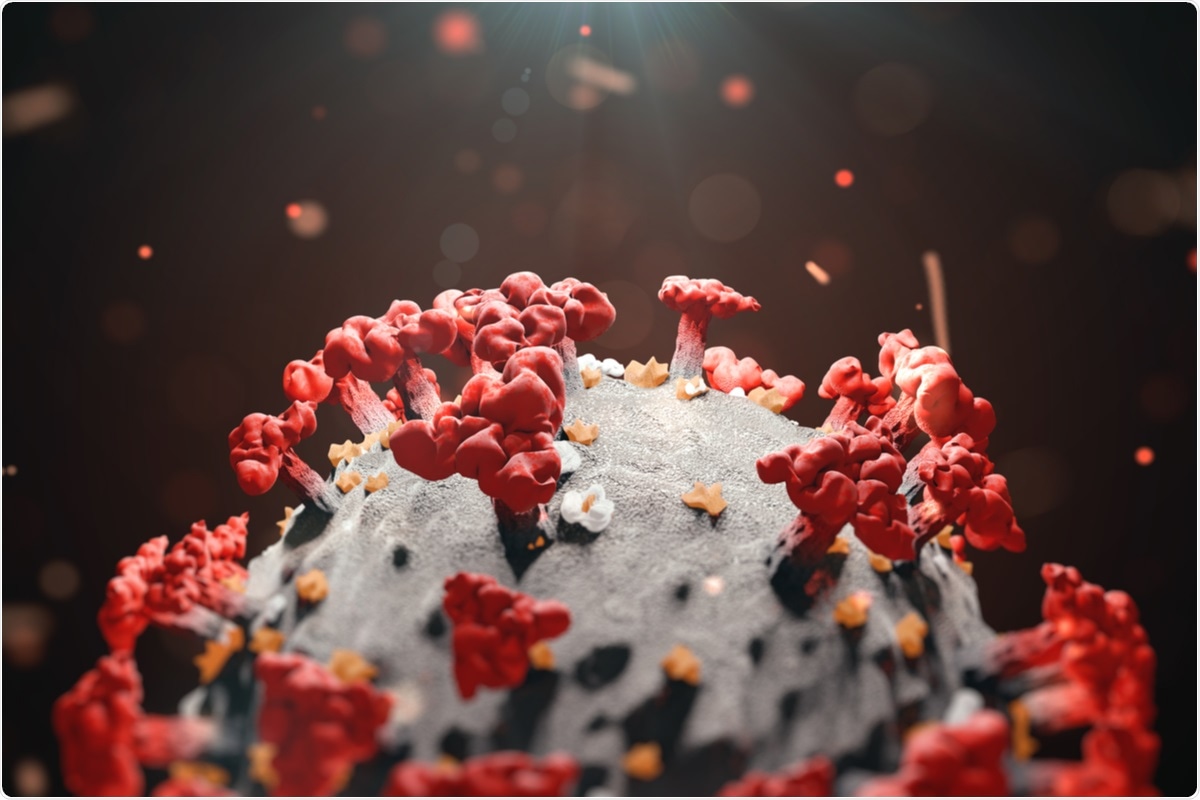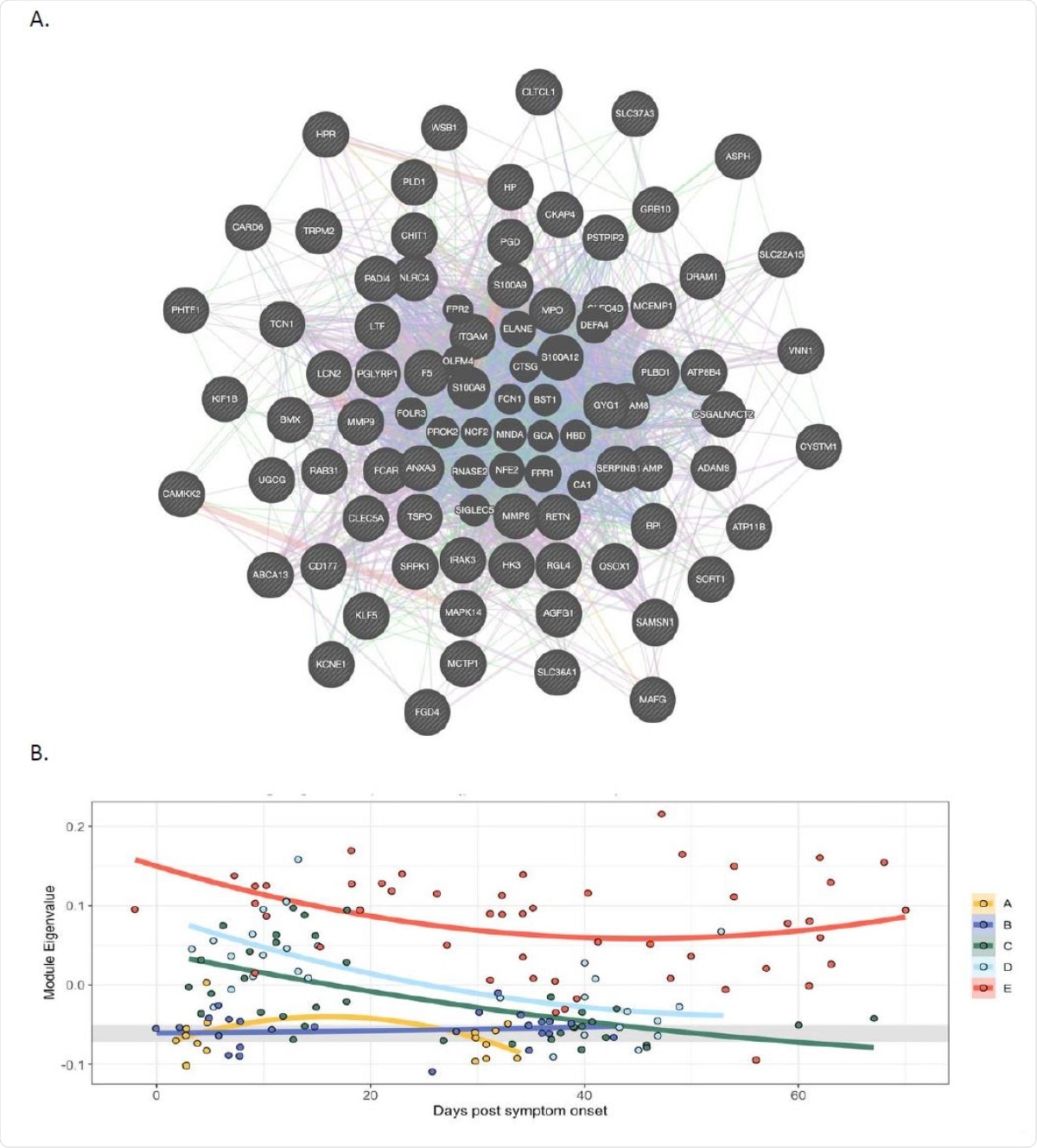As the number of coronavirus disease 2019 (COVID-19) cases mount worldwide, the acute illness has been observed to be associated with thromboembolic phenomena.
A new preprint on the medRxiv* server suggests that factor V, a coagulation factor, is upregulated in a range of white blood cells in severe COVID-19. This increase is linked to the observed coagulopathy, lymphopenia and suppression of adaptive immunity in such patients.

Both the immune and the clotting systems are thrown into disarray following infection by the severe acute respiratory syndrome coronavirus 2 (SARS-CoV-2), the causative agent of COVID-19. Lymphopenia specifically affecting the T cells has been found to persist for months, while coagulation defects precipitate severe and widespread organ damage in many severely ill COVID-19 patients.
Factor V and severe COVID-19
Patients with acute severe COVID-19 have a substantial increase in factor V levels, and an associated higher risk of thromboembolism. This factor is known to be secreted by T cells and monocytes. In particular, T regulatory cells (Tregs) are found to be a prominent source of factor V in these patients, just as in healthy blood donors. The production of factor V by peripheral blood mononuclear cells did not seem to be associated with the severity of disease, however.
Factor V is produced by neutrophils
The current study identifies neutrophils as another source in patients with severe COVID-19. The expression of factor V was closely linked to that of other genes expressed strongly in neutrophils. While this factor V gene module was not overexpressed in asymptomatic or mildly symptomatic individuals, it was highly expressed in severe COVID-19 and continued to be elevated for weeks thereafter. Most other coagulation factors failed to follow this pattern.
The study also suggests that this factor plays a key role in disrupting the normal immune response in severe COVID-19. Genes encoding factor V were upregulated in circulating blood cells – albeit modestly – and this increase was linked to plasma factor V levels.
The important contribution to the regulation of the immune response to the virus is, however, probably made by leukocyte-derived factor V secreted from the cells that have undergone migration into the tissues. Interestingly, this includes leukocyte migration into secondary lymphoid organs, which are sites normally protected against the effects of circulating factor V.

Factor V suppresses T cell proliferation
The researchers found that factor V suppresses the proliferation of T cells in vitro. However, factor V activated by thrombin does not show this suppressive effect. The use of a recombinant factor V with a mutation that causes prevents its activation by thrombin leads to greater suppression of T cell proliferation.
Severe lymphopenia in COVID-19
Patients with COVID-19 could have a higher expression of factor V in the blood, associated with the suppression of T cell counts. This appears to persist in the blood for months following SARS-CoV-2 infection.
Bronchoalveolar lavage fluid (BALF) from patients with severe COVID-19 contained many neutrophils, monocytes, macrophages, and eosinophils. Surprisingly few lymphocytes were observed, especially the effector T cells, both CD4 and CD8. Tregs increased in proportion.
Secondly, severe lymphopenia is observed in lung areas affected by SARS-CoV-2 pneumonia, which show macrophage or neutrophil infilrates or display neutrophil extracellular traps (NETs). It appears, therefore, that leukocyte-derived factor V may cause T cell suppression at infection sites.
Supporting this hypothesis, the researchers also observed that factor V levels in plasma were linked to the levels of coagulation. At the same time, T cell counts were associated with the level of expression of factor V genes in circulating white cells. Most of the plasma factor V comes from the liver, which is a site of adaptive immune tolerance.
What are the implications?
The study demonstrates that the elevation of factor V levels in plasma in patients with severe COVID-19 is due to overexpression by circulating neutrophils, Tregs and monocytes. The high factor V levels cause T cell suppression. Activation of factor V by thrombin causes this immunosuppressive activity to vanish.
While all hospitalized COVID-19 patients typically receive VTE prophylaxis, the researchers suggest that this may have unexpected consequences. Among the anticoagulants used currently to prevent venous thromboembolism (VTE) in COVID-19, those, like heparin, which have anti-thrombin activity, may reduce the activation of factor V. By so doing, it can simultaneously enhance the factor-V dependent suppression of T cells.
In fact, heparin has been experimentally shown to have an immunosuppressive effect, particularly on T cells. In severe COVID-19, the high factor V levels, produced by immune cells, may be responsible for severe lymphopenia and suppression of the adaptive immune response, and heparin may exacerbate this situation.
*Important Notice
medRxiv publishes preliminary scientific reports that are not peer-reviewed and, therefore, should not be regarded as conclusive, guide clinical practice/health-related behavior, or treated as established information.
https://news.google.com/__i/rss/rd/articles/CBMigwFodHRwczovL3d3dy5uZXdzLW1lZGljYWwubmV0L25ld3MvMjAyMTAxMjEvSGlnaC1mYWN0b3ItVi1sZXZlbHMtbGlua2VkLXRvLWx5bXBob3BlbmlhLWFuZC13ZWFrZW5lZC1pbW11bml0eS1pbi1zZXZlcmUtQ09WSUQtMTkuYXNweNIBhwFodHRwczovL3d3dy5uZXdzLW1lZGljYWwubmV0L2FtcC9uZXdzLzIwMjEwMTIxL0hpZ2gtZmFjdG9yLVYtbGV2ZWxzLWxpbmtlZC10by1seW1waG9wZW5pYS1hbmQtd2Vha2VuZWQtaW1tdW5pdHktaW4tc2V2ZXJlLUNPVklELTE5LmFzcHg?oc=5
2021-01-21 14:51:00Z
CAIiEIA3FmJ76Frbyj9ap63HnkMqMwgEKioIACIQZdRflS9INK7zM5FkBi3R3CoUCAoiEGXUX5UvSDSu8zORZAYt0dwww8TIBg
Bagikan Berita Ini














0 Response to "High factor V levels linked to lymphopenia and weakened immunity in severe COVID-19 - News-Medical.Net"
Post a Comment